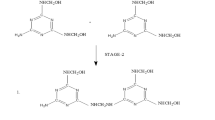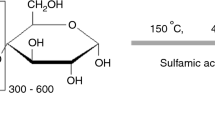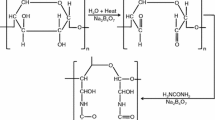Summary
The curing process in starch adhesives modified with melamine resin can take place by co-condensation or self-condensation. A high degree of co-condensation is required to provide a good water resistance of a cured glue joint. This can be attained by using melamine resins with a high concentration of hydroxymethylamino groups. The reduced effect of the adhesive on storage is due to a degradation of the melamine resin through the elimination of formaldehyde.
Similar content being viewed by others
References
BLANK, W.J. and HENSLEY, W.L.: J. Paint Technol. 46, 46 (1974)
CHRISTENSEN, G.: Progress in Org. Coatings 8, 211 (1980)
HOLMBERG, K.: J. Oil Col. Chem. Assoc. 61, 359 (1978)
PETERSEN, H. et al.: Farbe und Lack 87, 647 (1981)
SEIDLER, R. and STOLZENBACH, H.G.: Farbe und Lack 81, 281 (1975)
ZUYLEN, J. van: J. Oil Col. Chem. Assoc. 52, 861 (1969)
Author information
Authors and Affiliations
Rights and permissions
About this article
Cite this article
Holmberg, K. Alkali catalysed curing of starch-melamine resin systems. Polymer Bulletin 6, 553–558 (1982). https://doi.org/10.1007/BF00256378
Received:
Accepted:
Issue Date:
DOI: https://doi.org/10.1007/BF00256378




